Venturing into the trend of minimalist tiny house living, we embrace simplicity and functionality in the most intimate of spaces.
Our lives are often cluttered with possessions that demand time, energy, and resources, but by choosing a tiny home, we free ourselves from the unnecessary, concentrating on what truly enriches us. We advocate for this movement not just as a housing choice, but as a deliberate lifestyle, elevating our experiences over our square footage.
As we explore the realms of tiny homes, we notice the confluence of design, efficiency, and sustainability. These homes are more than just scaled-down structures; they embody a philosophy that less is indeed more.
With a well-planned tiny house, we observe how every inch is purposeful, and every design choice reflects a commitment to an eco-friendly, unencumbered way of life. Each element, from the materials selected to the placement of windows, contributes to a living space that is as practical as it is aesthetically pleasing.
Key Takeaways
- Minimalist tiny houses promote a lifestyle focused on essential experiences over possessions.
- Thoughtful design and efficiency are paramount in tiny homes, marrying form with function.
- Tiny house living exemplifies a commitment to eco-consciousness and simplifying life’s complexities.
Design Philosophy and Fundamentals
When we discuss minimalist tiny houses, we’re not only talking about a trend, but a reflection of a lifestyle choice that values simplicity and essential elements. It’s a thoughtful approach to living, aligning form and function to enhance our daily life.
Importance of Simplicity
In minimalist design, every curve and corner has its purpose, eliminating what’s unneeded to leave room for a pure and uncluttered environment. When we adopt simplicity, we commit to a way of life that is free from excess, focusing instead on what’s truly necessary. Key aspects in these homes often reflect revered architect Frank Lloyd Wright’s belief that form and function are one—a principle that ensures our living spaces are both practical and aesthetic.
Space Utilization
Effectively utilizing every inch of space is crucial in a tiny home. We design multi-functional furniture and build-in storage solutions to maximize our living area. For instance, a bed might pull out from a wall or a table could fold away when not in use. This efficient use of space supports a minimalist lifestyle by ensuring that everything serves multiple purposes and that not a single area is wasted.
The Tiny House Structure We Love
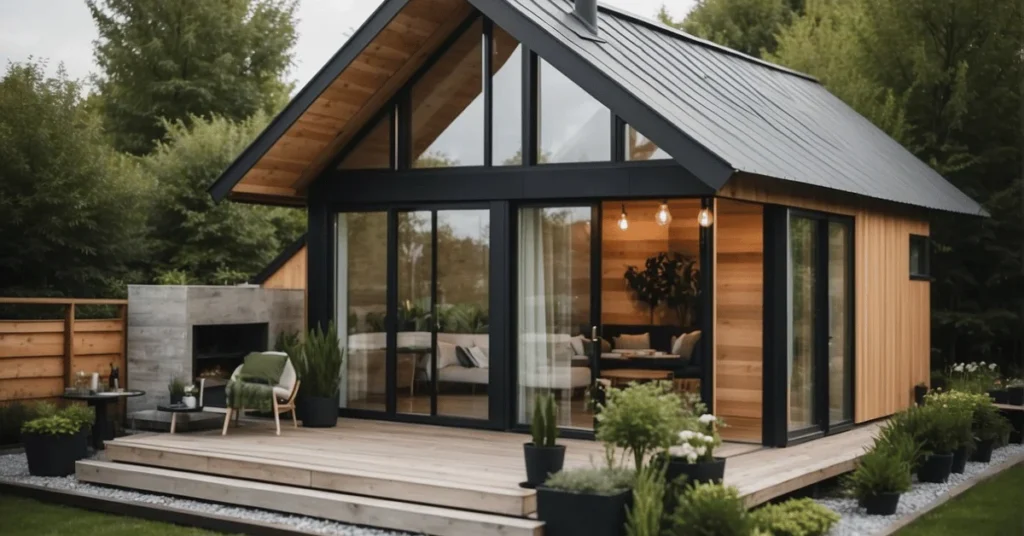
Imagine a home that embodies simplicity and freedom, allowing us to live more with less. We’re enamored with the tiny house movement and the ingenuity of these compact structures. Here’s a glimpse into the tiny house structure that captivates our hearts and minds.
Building Materials
Our tiny house boasts durable and sustainable building materials. We often utilize reclaimed wood, which not only adds rustic charm but also reduces environmental impact. For insulation, we opt for sheep’s wool or high-efficiency spray foam, ensuring our tiny abode stays cozy year-round.
Foundation and Mobility
Tiny houses can either be placed on a permanent foundation or are designed for a life on the go with wheels. Our preferred model embraces flexibility with a robust steel-frame trailer foundation, marrying the stability of a traditional home with the mobility of an RV.
Interior Layout
Within the interior layout, every square inch serves a purpose. We love the multi-functional furniture like a sofa that transforms into a bed, and a folding dining table. Our kitchen is compact yet full-featured, the bedroom often features a space-saving loft, and despite size constraints, the bathroom includes all essential amenities. The living area is designed to maximize space, providing a seamless flow and connectivity between each area of our tiny house.
Interior Design and Furnishings
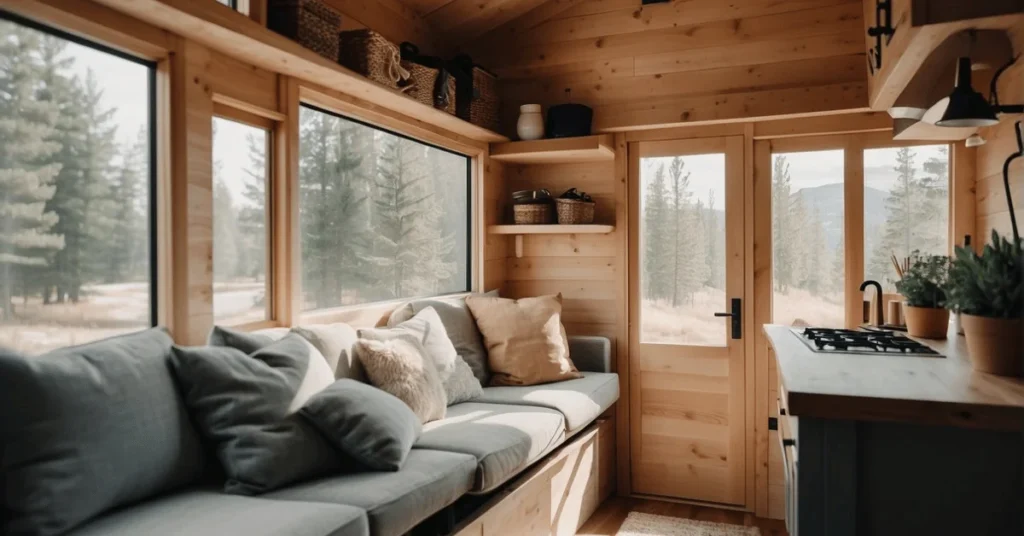
When we craft the interior of a minimalist tiny house, every object we choose serves a purpose, balancing functionality with a clean aesthetic. From multi-functional furniture to pared-down decor, we ensure that each element contributes to our serene and harmonious vision.
Furniture Selection
Choosing furniture for a tiny house is much like solving a puzzle—every piece must fit precisely and serve multiple purposes. Consider a convertible sofa that transforms into a bed, ensuring our living space can also be our sleeping area. We incorporate built-in storage within seating or a fold-down table to maximize space and maintain an uncluttered environment. Choosing items that are both practical and visually appealing allows us to achieve style without waste.
Decor and Aesthetics
In the realm of decor, the mantra “less is more” guides our approach. We use a neutral color palette for paints or stains to create a sense of openness. For a touch of beauty, a single, well-chosen piece of artwork or a potted plant can add to our space without overpowering it. We carefully consider the placement of each decor element, ensuring that each contributes to the overall serenity of the home. Utilizing natural light with large windows not only illuminates but also enhances the minimalist aesthetic we strive for.
Our Guide to Lifestyle and Sustainability
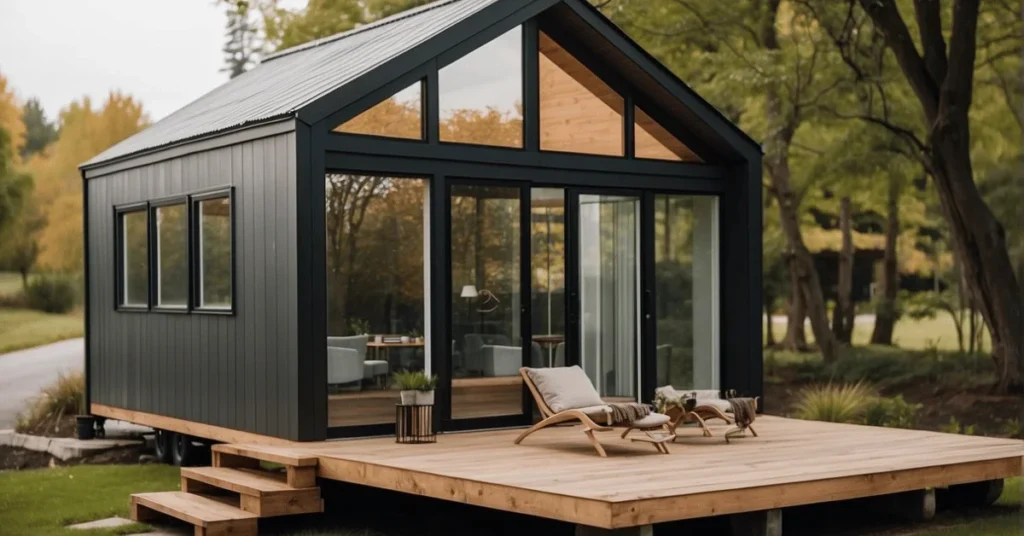
In embracing a minimalist living ethos, we’re committing to a more sustainable living practice that cherishes nature and respects the environment. Here, we’ll share our insights on how to live with less and manage energy and resources.
Living with Less
Living with less isn’t just about reducing clutter; it’s about choosing furnishings and items that have multiple uses and occupy minimal space. By selecting quality over quantity, we not only free up our living areas but also clear mental space, allowing us to focus on what’s truly important. Articles like “Embracing Minimalist Tiny House Living” illustrate the beauty of this simplistic approach.
- Invest in multi-purpose furniture.
- Digitize documents to reduce paper waste.
- Keep only what you use regularly.
Energy and Resources
In our tiny homes, every watt of power and drop of water is precious.
- Utilize solar panels for cleaner energy.
- Collect rainwater for landscaping needs.
By conscientiously optimizing our energy consumption and responsibly sourcing our resources, we effectively reduce our carbon footprint and pave the way towards a greener future. Managing resources wisely is illustrated in resources like “Tiny House Living: Minimalism, Style, Sustainability.”
Practical Considerations For You
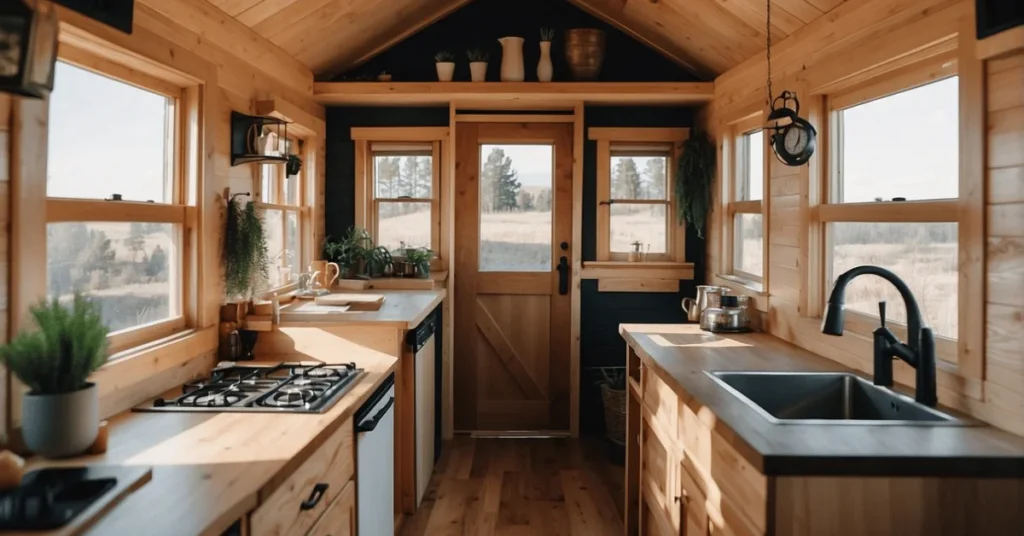
When we decide to adopt the tiny home lifestyle, it’s vital to acknowledge that while it’s an affordable and appealing shelter alternative, we must navigate some practical hurdles. Let’s dive right into understanding the essentials of legalities and ensuring our connections to the world remain intact.
Legal and Zoning Issues
North America presents a mosaic of tiny home regulations that can greatly affect our living situation. Always check local zoning laws as they dictate the size and placement of our tiny houses. For instance, some areas may classify our tiny homes as Recreational Vehicles (RVs), while others may have more strict land use regulations, affecting our privacy and ability to live where we desire.
Connectivity and Services
Maintaining connections is non-negotiable for us—whether it’s power, water, or the internet. We need to ensure that our tiny home can be hooked up to essential services. Off-grid options exist but necessitate an initial investment in systems like solar panels or composting toilets. Always remember, a reliable internet connection is crucial for most of us, and it might involve either hardwired services or strong mobile signals, depending on the location of our tiny home.
Frequently Asked Questions
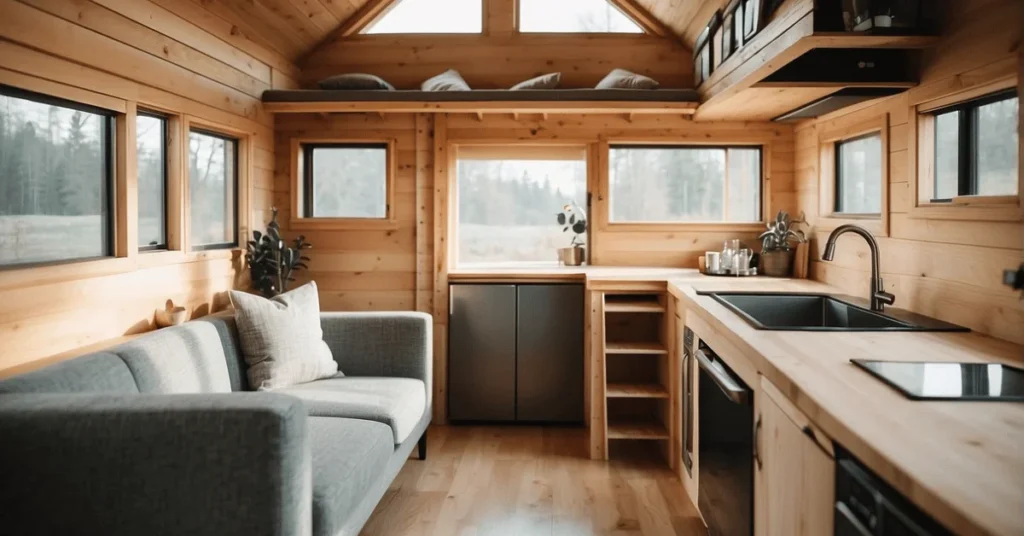
When diving into the world of tiny living, we regularly encounter a host of queries. Detailing the essentials, here’s a distilled synopsis of need-to-knows for minimalist tiny house enthusiasts.
How can I find minimalist tiny house plans suitable for my needs?
Minimalist tiny house plans are readily available, crafted to suit various styles and requirements. Begin by identifying your must-haves and consult reputable sites offering diverse tiny house designs to find the one that speaks to you.
Can you provide insights on budgeting for a minimalist tiny house?
We advise starting with a clear financial plan. Budgeting for a tiny house involves not just building costs but also land, utilities, and ongoing maintenance. Remember to factor in cost-saving strategies inherent to tiny living.
What should one consider when choosing a location for a tiny home?
Choosing a location goes beyond scenic vistas; it means ensuring zoning laws permit tiny houses. Also, consider accessibility to amenities, community dynamics, and climate, all influential on your tiny house experience.
What are the long-term maintenance expectations for a minimalist tiny house?
Long-term maintenance for tiny houses often involves regular checks and upkeep of space-saving features and utilities. Due to their smaller size, maintenance can be less daunting than traditional homes but no less important.
How does the resale value of tiny homes compare to traditional housing?
Tiny homes generally offer a niche market appeal which can impact resale value. They can retain or increase in value when well-maintained and situated in desirable areas, although market fluctuations persist as with any real estate.
What are the legal considerations to be aware of when building a tiny house?
Legal considerations are vital; they cover building codes, zoning laws, and potential restrictions. Engage with local authorities and tiny house communities to fully understand the requirements and ensure your tiny home is compliant.
Thank you for reading our guide to minimalist tiny houses! We’ve shared tips on maximizing space, but we’re eager to hear your ideas. Share your unique touches and join the conversation below!


